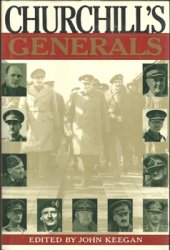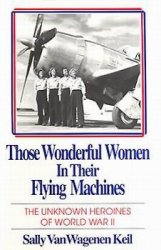On August 21, 1959, President DwiGHT D. Eisenhower signed the proclamation officially designating Hawaii as the 50th state of the Union, ending more than 60 years of struggle for admission.
Prior to 1959, Hawaii existed as a semicolonial appendage of the United States. Its independence formally ended with the overthrow of the monarchy of Queen Lili’oukalani in 1893 by a tiny but powerful minority of white Americans. Five years later, against a background of war with Spain and unprecedented enthusiasm for expansion, the United States annexed the islands, then incorporated them as a territory in 1900.
Beginning shortly after annexation, Hawaii regularly, but with little initial enthusiasm, petitioned Congress for admission as a state. After 1919, statehood bills frequently were introduced into Congress by the territory’s nonvoting delegate. This lack of enthusiasm was mostly the result of political pressure by sugar plantation owners such as the “Big Five,” who found territorial status convenient because it enabled them to continue importing cheap foreign labor that would be prohibited otherwise.
By 1935, economic difficulties confronting “King Sugar” prompted Hawaiians, whose economic security relied largely on the prosperity of the plantations, to begin an organized, forceful, and expensive campaign for political equality with the existing states. Five years later, against a background of war in Europe and mounting tensions in the Pacific, a plebiscite indicated that more than two-thirds of Hawaii’s electorate favored statehood. Gallup Polls conducted in the United States after 1945 also revealed that a substantial majority consistently favored immediate admission. After World War II statehood was supported by both major national political parties, recommended by Presidents Harry S. Truman and Eisenhower, and endorsed by an overwhelming majority of national editorial opinions. However, it took another decade for Hawaii to gain statehood.
The delay in Hawaii’s long-frustrated bid for statehood was tied to wider national controversies such as minority rights, states’ rights, internal subversion, Americanization, and racial equality. Hawaii presented Congress with a dilemma because it raised the question of equality for a noncontiguous area with a predominantly nonwhite population. In essence, statehood was withheld until the question could be extricated from such a deep national conflict, a separation aided in large part by the burgeoning Civil Rights movement.
In March 1959, both houses of Congress passed the Admission Act, and President Eisenhower signed it into law. On June 27, a referendum asked residents of Hawaii to vote on whether to accept the statehood bill; all districts voted 93 percent or more in favor of admission. On August 21, the proclamation of Hawaii as the 50th state of the Union was announced. This date is celebrated yearly by Hawaii as Statehood Day.
After statehood, Hawaii quickly became a modern state with a construction boom and a rapidly growing economy. The Hawaii Republican Party, which was strongly supported by the plantation owners, was gradually voted out of office between 1956 and 1958 and replaced by the Democratic Party of Hawaii, which dominated state politics for 40 years. In later decades, the state government implemented programs to promote Hawaiian culture. The Hawaii State Constitutional Convention of 1978 enacted programs such as the Office of Hawaiian Affairs to promote the indigenous Hawaiian language and culture. At the beginning of the 21st century, however, these programs sparked controversial new political dialogues within the state as grassroots organizations began to call for restoring Hawaiian independence.
Further reading: Roger Bell, Last among Equals: Hawaiian Statehood and American Politics (Honolulu: University of Hawaii Press, 1984).
—Lance R. Eisenhower
Hayden, Tom (1939- ) activist, New Left leader Thomas Emmett Hayden was one of the central figures of the New Leet and student movements of the 1960s.
Born in Royal Oak, Michigan, on December 11, 1939, Hayden attended the University of Michigan where he served as editor of the Michigan Daily student newspaper. On a trip in 1960 to Berkeley, California, Hayden was inspired by the political atmosphere there, and during his senior year he immersed himself in student activism.
After graduating in 1961, Hayden fully devoted himself to the burgeoning student movement. He moved to Atlanta, Georgia, where he worked as field secretary for the newly formed Students eor a Democratic Society (SDS), reporting on the southern Civil Rights movement. Not content merely to write about the movement, Hayden took part in activities organized by the Student Nonviolent Coordinating Committee (SNCC). Because of his participation, Hayden was beaten by whites in McComb, Mississippi.
In 1962 Hayden wrote the Port Huron Statement, intended as SDS’s mission statement but adopted generally as the New Left’s manifesto. Influenced by sociologist
C. Wright Mills, Hayden, in the Port Huron Statement espoused participatory democracy, questioned the morality of the cold war, and advocated activism among students. After its ratification, Hayden was elected president of SDS. SDS and the Port Huron Statement spread across college campuses, motivating a generation of students raised in the affluence of the 1950s to work for economic and racial equality and against apathy in America.
In 1963, Hayden helped form the Economic Research and Action Project (ERAP) as part of SDS, with the aim of improving the economic lives of urban, working-class Americans on a grassroots level. Hayden moved to Newark, New Jersey, where he organized poor blacks against poverty, crime, and an unresponsive city government. Hayden left Newark after the city’s riots in July 1967.
Hayden’s next cause became the Vietnam War. After its escalation in 1965, Hayden became increasingly devoted to ending the war. During December 1965, he visited North Vietnam, which increased government suspicion of him and the New Left in general as communist sympathizers. Indeed, Hayden openly admired the North Vietnamese and championed their cause. In 1967, Hayden returned from a second trip to North Vietnam having secured the release of three American prisoners of war.
By 1968, the seemingly endless war had frustrated the New Left. While pondering more confrontational tactics to end the war, Hayden participated in the Columbia University student strike of April 1968. Later that year, Hayden went to Chicago, Illinois, to organize the National Mobilization Committee’s demonstrations at the Democratic National Convention (DNC). The demonstrations were intended to challenge the government’s insistence on continuing the Vietnam War in the face of widespread public disapproval. Specific plans were vague, but the demonstrators intended to increase antagonism toward the government, reflecting the movement’s growing disillusionment with nonviolent tactics.
Violence erupted outside the DNC as Chicago police and national guardsmen, under orders of Mayor Richard Daley, indiscriminately beat demonstrators, reporters, and bystanders. Antiwar activists were initially blamed for what was later acknowledged to be a police riot. As one of the main organizers, Hayden was charged with conspiracy to create a public disturbance and tried as one of the Chicago Seven in 1969. After a sensational trial, Hayden was found guilty of inciting violence and sentenced to jail for contempt of court. In 1972, these verdicts were overturned on appeal.
After the havoc of Chicago, the New Left disintegrated. Some activists became more extreme and violent while others, including Hayden, withdrew from the movement. Hayden relocated to Oakland, California, in 1969 where, after participating in the People’s Park demonstrations in Berkeley, he joined a commune. Members later voted to expel Hayden because of his dominant personality and he moved to Venice, California.
By 1972, Hayden had returned to the cause of ending the Vietnam War. With Jane Fonda, an actress who opposed the war and had angered many with her own trip to North Vietnam, Hayden organized the Indochina Peace Campaign (IPC), which successfully lobbied Congress to cut funding for the war.
Inspired by the IPC’s success, Hayden entered California politics in an attempt to move 1960s values into mainstream politics. After losing his bid for election to the Senate in 1976, Hayden formed the Campaign for an Economic Democracy, which mirrored his goals for the ERAP in Newark. In 1982, supported by the funding of Fonda, who was now his wife, and her Hollywood connections, Hayden won election to the California State Assembly from Santa Monica, and he served there until he won election to the State Senate in 1992. Hayden continues to confront attacks on his radical past while, in his political work, he focuses on ecological concerns and the threat of large corporations to the lower classes.
Further reading: Tom Hayden, Reunion: A Memoir (New York: Random House, 1988); James Miller, Democracy Is in the Streets: From Port Huron to the Siege of Chicago (New York: Simon & Schuster, 1987).
—Paul Rubinson




 World History
World History









